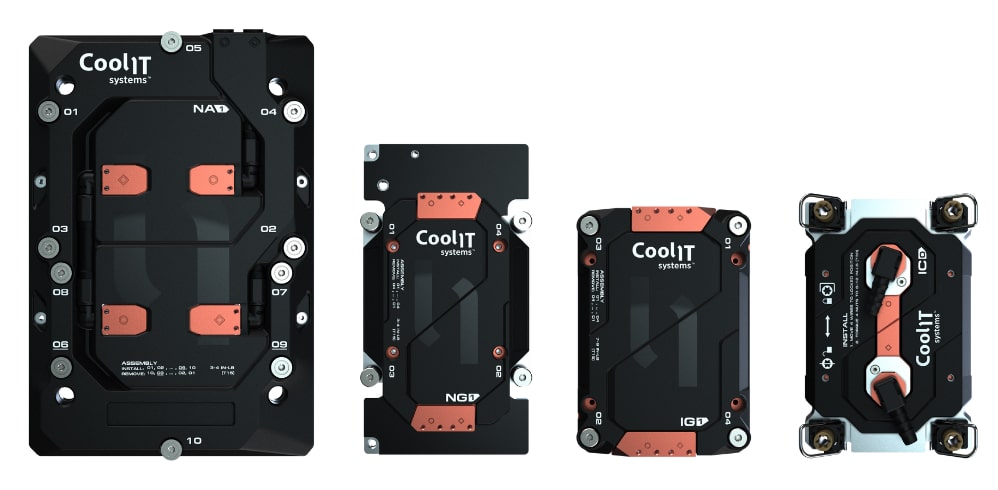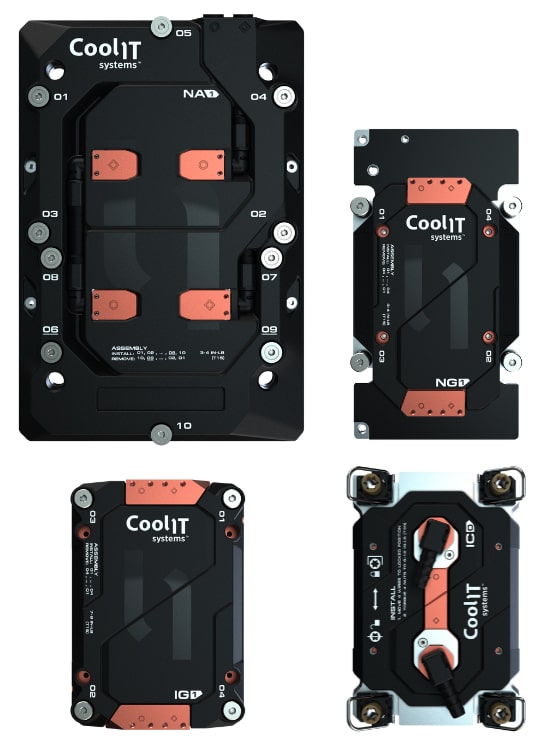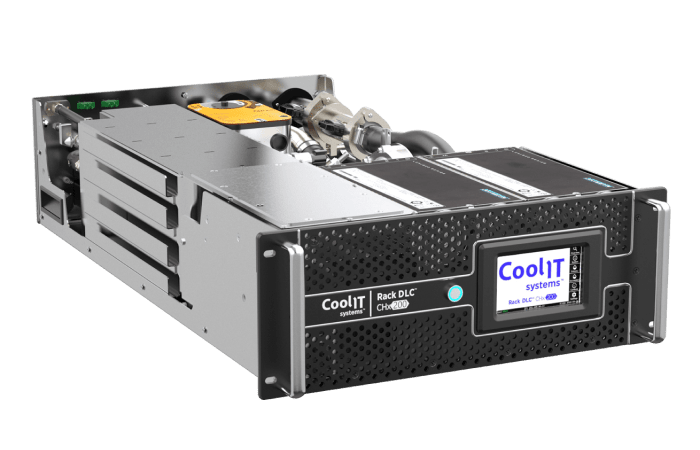
Our Products
CoolIT products are equipped to support any server, rack configuration and data center environment to enable server technology to perform at its peak. With CoolIT’s modular approach, customers work directly with CoolIT’s engineering experts to select components specific to their needs. It’s as easy as 1, 2, 3.
OMNI™ All-Metal Coldplates
Featuring a seamless unibody construction, the OMNI™ All-Metal Coldplate is the industry’s highest-performing, most reliable and production scalable coldplates. CoolIT Systems is ready to produce thousands per week to support the AI ramp.
Passive Coldplates
CoolIT Systems CPU Coldplate are purpose-designed to accommodate lower profile footprints, such as 1U blades and other custom chassis. These passive coldplates do not contain any high failure rate components such as internal pumps. Instead, coolant circulation is provided by a rack or row based Coolant Distribution Unit (CDU).
Coolant Distribution Units (CDU)
The world’s highest density coolant distribution units (CDU) are engineered to meet the most demanding direct liquid cooling requirements for artificial intelligence (AI), high-performance computing (HPC), and enterprise computing applications. Available in AHx (liquid-to-air) and CHx (liquid-to-liquid) models, CoolIT’s CDUs deliver exceptional performance, density, efficiency and reliability for data centers with or without facility water infrastructure.
Rack and Chassis Manifolds
CoolIT Systems’ Rack Manifolds are made of reliable stainless steel, rendering them incredibly robust. Combined with dry-break, dripless Quick Disconnects from Staubli, these manifolds are safe and effective building blocks when paired with Rack DLC Passive Coldplate Loops.
Rack Manifolds are organized for a manual connection at the front or back of the rack. Manifolds are flexible and can be arranged vertically or horizontally within a rack .
Rear Door Heat Exchangers (RDHx)
CoolIT Rear Door Heat Exchangers (RDHx) are DLC-enabled, meaning they can be deployed on their own or as an integral part of a DLC system. The CoolIT RDHx is an excellent solution when a 100% heat capture (“room neutral”) solution is required, or when a customer’s application doesn’t yet require DLC.
Secondary Fluid Networks (SFN)
Secondary fluid networks (SFN) are custom designed, partially pre-assembled and installed to meet the needs of the data center. Reliable fusing techniques are used on-site for rapid deployments with cleaning and pressure testing as part of the process.





















